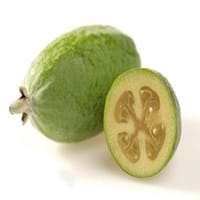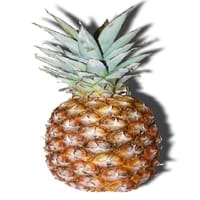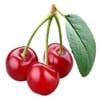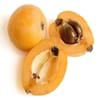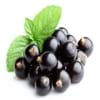Health Benefits
Anti depressant, Cancer prevention, Reduces nervous tension, Treatment of alzheimer's disease, Treatment of Lung disease
Asthma treatment, Bronchitis treatment, Cancer prevention, Heart care, Increases metabolic rate
General Benefits
Digestive aid, Helps in weight loss, Improves blood circulation, Strengthens bones, Treatment of common cold
Anti-inflammatory properties, Controls blood pressure, Digestive aid, Eye care, Healing of wounds, Maintains healthy cholesterol level, Strengthens bones, Treatment of sinusitis, Treatment of common cold
Skin Benefits
Brightens and lightens complexion, Skin rejuvenation
Anti-aging benefits, Brightens and lightens complexion, Skin cleansing, Treatment of acne, Treatment of dark spots
Hair Benefits
Promotes longer and healthier hair, Protects hair
Prevents hair loss
Allergy Symptoms
NA
Abdominal pains, Itching in tongue and other parts of mouth, Sneezing, Swelling, Tingling sensation in wrist and face, Vomiting, Wheezing
Side Effects
Allergic reaction
Causes swollen mouth, Allergic reaction, Diarrhoea, Nausea, Skin rash, Vomiting
Best Time to Eat
As a snack in the late afternoon, Don't consume at night and before bed, Eat the fresh ones, avoid mixing with any other foods, don't eat after meal., Morning time (before lunch)
Best if taken as a breakfast (or empty stomach), As a snack in the late afternoon, Eat the fresh ones, avoid mixing with any other foods, don't eat after meal., Morning time (before lunch)
Vitamin A (Retinol)
Not Available
Vitamin B5 (Pantothenic Acid)
Vitamin C (Ascorbic Acid)
Vitamin K (Phyllochinone)
Phytosterol
Not Available
Calories in Fresh Fruit with Peel
Not Available
Not Available
Calories in Fresh Fruit without Peel
Calories in Frozen Form
Not Available
Calories in Canned Form
Not Available
Type
Tree fruit
Berry, Tropical
Season
Autumn, Winter
Autumn
Varieties
Anatoki, Gemini, Kaiteri, Kakariki, Pounamu, Unique, Apollo, Den's Choice, Kakapo, Mammoth, Opal Star, Triumph and Wiki Tu
Smooth Cayenne, Abacaxi, Red Spanish and Queen
Inside Color
White
Yellow
Taste
Sweet
Strong, Sweet, Tart
Origin
Argentina, Brazil, Paraguay, Uruguay
Central America, South America
Grows on
Not Available
Not Available
Soil Type
Clay loam, Gravely loam, Sandy
Clay, Sandy loam, Well-drained
Climatic Conditions
Cold, Warm
Hot, Sunny
Facts about
- Feijoa is called as "pineapple guava" in some countries.
- Feijoa tree is an ornamental plant that can also be used as hedge & windbreak.
- All parts of feijoa fruit are edible(skin is mostly discarded).
- A single pineapple takes 3 years to reach maturation.
- Pineapple is not an apple, but is actually a berry.
- The name is with reference to its resemblance to pine cones.
- Pineapple is sweeter if scales are more.
Top Producer
New Zealand
Costa Rica
Other Countries
Australia, Azerbaijan, India, Japan, United States of America
Brazil, India, Philippines, Thailand
Top Importer
China
United States of America
Top Exporter
New Zealand
Costa Rica
Botanical Name
Acca sellowiana
Ananas comosus
Synonym
Feijoa sellowiana or Orthostemon sellowianus
Ananas sativus
Subkingdom
Tracheobionta
Tracheobionta
Division
Magnoliophyta
Magnoliophyta
Class
Magnoliopsida
Liliopsida
Subclass
Rosidae
Commelinidae
Family
Myrtaceae
Bromeliaceae
Species
A. sellowiana
A. comosus
Generic Group
Myrtle
Pineapple
Compare Feijoa and Pineapple
It is important compare Feijoa and Pineapple as both the fruits have a different nutritional value. Their comparison can be done on the basis of their vitamin and mineral content, calories, benefits as well as characteristics, making it easier for us to choose the best fruit for our diet. Their general health benefits are as follows:
Feijoa Benefits: digestive aid, helps in weight loss, improves blood circulation, strengthens bones and treatment of common cold.
Pineapple Benefits: anti-inflammatory properties, controls blood pressure, digestive aid, eye care, healing of wounds, maintains healthy cholesterol level, strengthens bones, treatment of sinusitis and treatment of common cold.
Fruits are also used as a remedy for various hair problems. The hair benefits of Feijoa are: promotes longer and healthier hair and protects hair and hair benefits of Pineapple are: prevents hair loss. Some fruits are known to cause allergic reactions. The allergy symptoms of first fruit are: na and the symptoms of second fruit are: abdominal pains, itching in tongue and other parts of mouth, sneezing, swelling, tingling sensation in wrist and face, vomiting and wheezing. Get sorted Feijoa vs Pineapple comparison with the help of fruit comparison tool by fruitvs.com.
